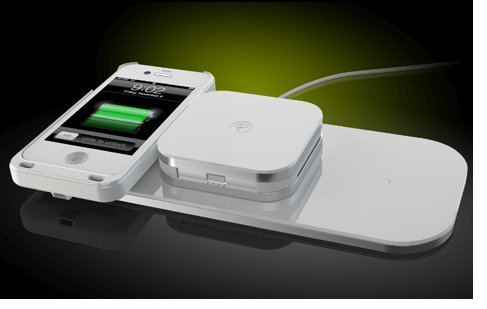 Qualcomm which is known for its silicon and wi-fi technology for handsets and tablets is spreading into software and service. One of the consumer products they are currently developing is called Skifta. It is a media shifting platform which works through DLNA-certified and UPnP -compatible devices. DLNA protocol has been around for about eight years. Most TVs today which are over 36 inches and Internet enable are DLNA capable. The Web site of your TV’s manufacture should let you know if your TV is DLNA capable. DLNA is a nonprofit trade organization which enables the sharing of digital media between various consumer devices by defining interoperability guidelines. Because DLNA is a nonprofit organization they don’t have the money to spend on advertising and promotion, so its adoption has been slow but steady. The growth of the Smart or Connected TV market has help to increase its popularity over the last 12-18 months. Its biggest rival is Apple’s Air Play.
Qualcomm which is known for its silicon and wi-fi technology for handsets and tablets is spreading into software and service. One of the consumer products they are currently developing is called Skifta. It is a media shifting platform which works through DLNA-certified and UPnP -compatible devices. DLNA protocol has been around for about eight years. Most TVs today which are over 36 inches and Internet enable are DLNA capable. The Web site of your TV’s manufacture should let you know if your TV is DLNA capable. DLNA is a nonprofit trade organization which enables the sharing of digital media between various consumer devices by defining interoperability guidelines. Because DLNA is a nonprofit organization they don’t have the money to spend on advertising and promotion, so its adoption has been slow but steady. The growth of the Smart or Connected TV market has help to increase its popularity over the last 12-18 months. Its biggest rival is Apple’s Air Play.
Qualcomm was showing off its software platform Skifta at CES 2012, which works with the DLNA platform. Think of Skifta as Airplay for Android. Once Skifta is installed on your Android device, it will go out and find any DLNA enabled device including TV’s, computers and the Playstation. You can then sending any media that is available on your network to that device. Skifta also gives you access to various Internet providers including Revision3, Ted Talks, Facebook and others.
Qualcomm is also developing a Skifta audio adapter which you attach to a receiver that is not DLNA enable and enable it. They are also making a DLNA platform that can be installed easily by the manufacture into a receiver. I installed the Skifta application on my Android phone and it almost immediately connected and found the media on my network. Once I set up an account it also let me pick up media from Revision3 and Ted Talks among others. Unfortunately I don’t have a connected TV, so for me its use is limited, but I love its possibilities.
Interview by Todd Cochrane of Geek News Central and Steve Lee Wave of Tech
[cessponsor]
Podcast: Play in new window | Download
Subscribe: Apple Podcasts | RSS | More




 Microsoft can rightly claim to have brought gesture recognition to the consumer market through
Microsoft can rightly claim to have brought gesture recognition to the consumer market through  As energy prices rise and green credentials come under scrutiny, each step in the energy path is being examined for inefficiency. Andy and Courtney listen to Paul Panepinto from
As energy prices rise and green credentials come under scrutiny, each step in the energy path is being examined for inefficiency. Andy and Courtney listen to Paul Panepinto from 
 Did you know that there are 78 million baby boomers in the US and over 1 billion world wide. That the fastest growing age group are adults over the age of 85. Many of these adults are separated from their children and grandchildren and live alone often in isolation. A coalition called
Did you know that there are 78 million baby boomers in the US and over 1 billion world wide. That the fastest growing age group are adults over the age of 85. Many of these adults are separated from their children and grandchildren and live alone often in isolation. A coalition called 
